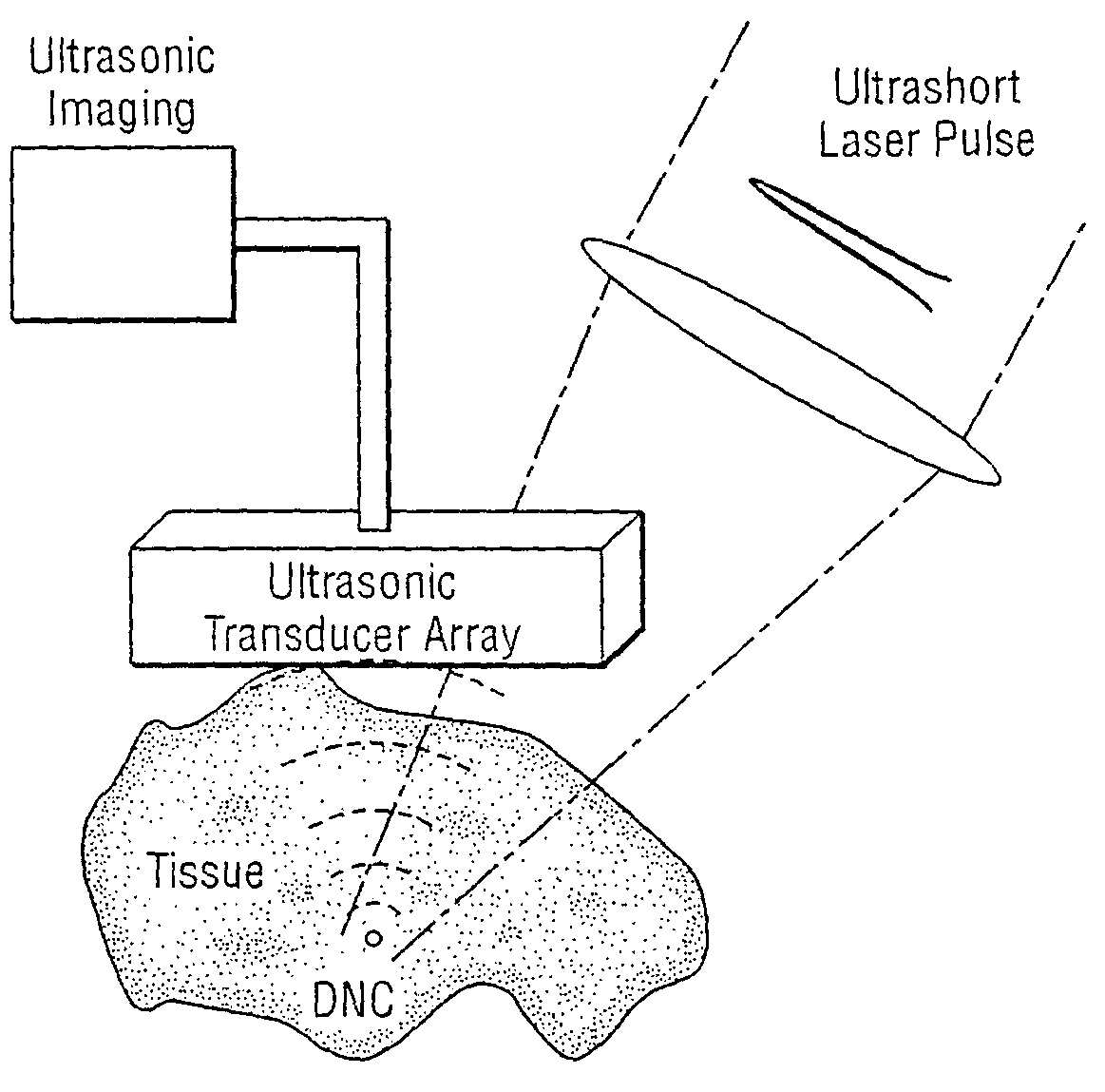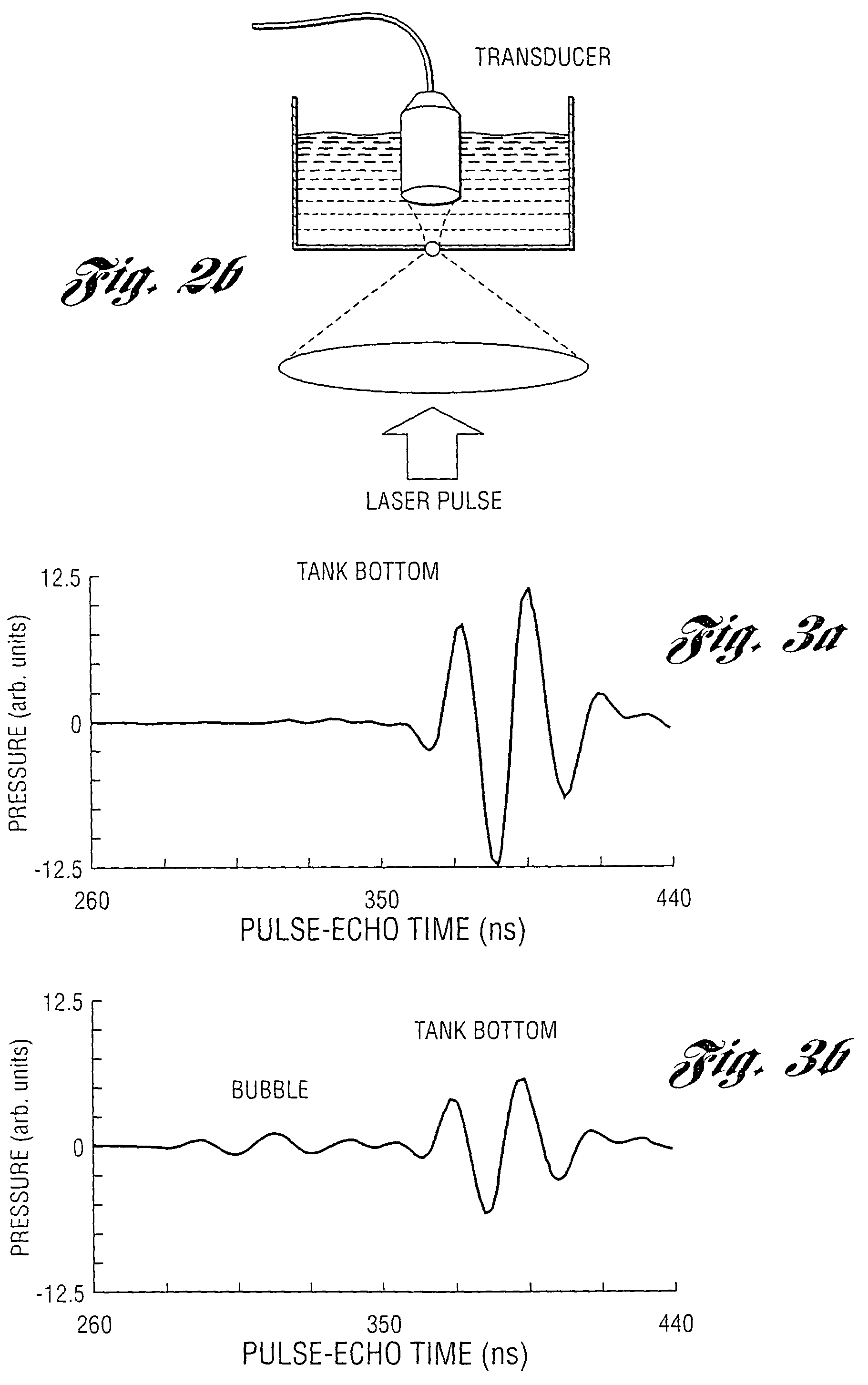Acoustic monitoring method and system in laser-induced optical breakdown (LIOB)
a technology of optical breakdown and laser, applied in the field of acoustic monitoring methods and systems in laser-induced optical breakdown, can solve the problems of not being able to provide only limited information about the photodisruption, and none of the methods are real-time or applicable to liquid or liquid-like samples, so as to enhance the electric field
- Summary
- Abstract
- Description
- Claims
- Application Information
AI Technical Summary
Benefits of technology
Problems solved by technology
Method used
Image
Examples
Embodiment Construction
)
[0057]One aspect of the present invention provides an acoustic technique, based on pulse-echo measurements, to probe LIOB-induced microbubbles. It complements traditional methods in which shock wave generation is monitored in the far field of the source with an ultrasonic transducer. FIG. 1 presents a typical acoustic recording from an LIOB event in water where two acoustic signals are clearly detected. This experiment was performed with femtosecond pulsed Ti:Sapphire laser source and a PVDF ultrasonic recording system similar to the one described below. The first signal is a broadband pulse resulting from the initial shock wave (i.e., acoustic emission). The second signal is a pulse-echo recording from the LIOB site. The acoustic pulse was timed to arrive at this site about 750 nsec after the laser pulse, and the resultant reflected signal at this time signifies that a cavitation bubble was formed.
[0058]Once microbubble formation is detected, pulse-echo recordings with high freque...
PUM
| Property | Measurement | Unit |
|---|---|---|
| diameter | aaaaa | aaaaa |
| diameter | aaaaa | aaaaa |
| power | aaaaa | aaaaa |
Abstract
Description
Claims
Application Information
 Login to View More
Login to View More - R&D
- Intellectual Property
- Life Sciences
- Materials
- Tech Scout
- Unparalleled Data Quality
- Higher Quality Content
- 60% Fewer Hallucinations
Browse by: Latest US Patents, China's latest patents, Technical Efficacy Thesaurus, Application Domain, Technology Topic, Popular Technical Reports.
© 2025 PatSnap. All rights reserved.Legal|Privacy policy|Modern Slavery Act Transparency Statement|Sitemap|About US| Contact US: help@patsnap.com



